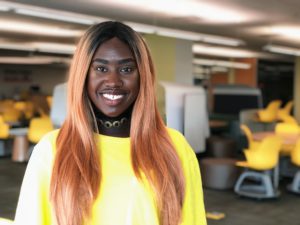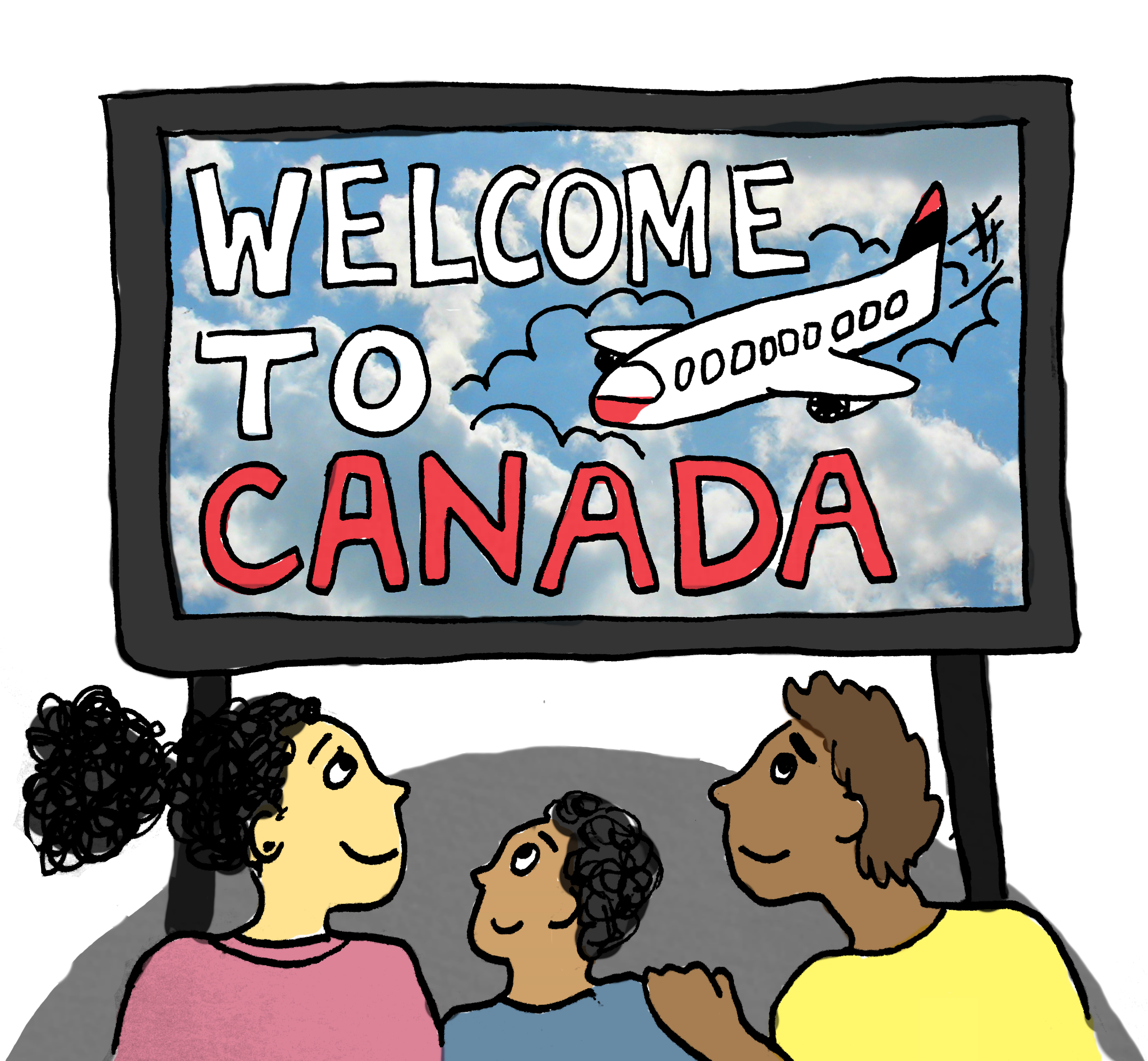Saba Qureshi, Marieta-rita Osezua, and Victoria Gravesande talk to three migrant students in Canada about the challenges they have faced settling in Canada and how they have been forced to respond to racism.
Since Canada’s confederation in 1867, 17 million immigrants have arrived in Canada. According to a Statistics Canada report from 2016, 21.9 per cent of the population is made up of immigrants or the descendants of immigrants.
Throughout much of Canada’s history, immigration mainly came from the United States and Europe, but since the 1960s, according to the Statistics Canada report, the diversity of that immigration has increased, spanning a range of ethnicities.
The welcome has not always been warm for these people, Priminster Justin Trudeau in a press release on the International Day for the Elimination of Racial Discrimination, which takes place annually on March 21.
“As Canadians, we embrace diversity as a defining aspect of our identity. Yet, over the centuries, people in Canada have not felt progress equally. Far too many have faced discrimination, often on the basis of the way they look or where they are from,” Trudeau said in a press release.
In 2016, police reported 1,409 criminal incidents in Canada that were motivated by hate, an increase of three per cent from 2015.
The Charlatan talked to some international students and immigrants, and asked them about how they found settling in Canada, what challenges they faced, and how they responded to racism.
Gul-e-Rana
Gul-e-Rana, a life sciences student at the University of Toronto, was born in Pakistan. She was only two years old when her family moved to the United States. Rana lived there for six years before moving to Canada with her family in 2007, she said.
“The main reason as to why people move to Canada rather than other countries is because of the diversity. A lot of immigrants come here because they can still practice their religion and their culture, whereas in America you kind of have to blend into society,” Rana said.
As a child of immigrant parents, Rana said she grew up watching her parents struggle, and now she says she has taken it upon herself to fulfill their dreams through her success.
“I guess the American dream isn’t so real and you only realize that after coming here yourself. My parents struggled a lot and, to be honest, are still struggling,” she said. “Life abroad is not as glamorous as it is portrayed and it’s even more difficult when you don’t have a support system. That is, a family to guide you and advise you, so you end up making a lot of mistakes or are completely unaware of certain opportunities.”
“I want to be able to show them their sacrifices and struggles were worth it. Maybe they didn’t live the life they were expecting but hopefully their children will,” added Gul-E-Rana.
Challenges close to home
Rana said her parents are not alone in their struggles. Other people in the community she grew up in have faced racism as well, she said.
“A couple of years ago, a woman was picking up her two young kids from school and two white men attacked her and pulled her hijab off, all in front of her kids,” Rana said. “This was in front of Grenoble Public School (Toronto). Our community was very shocked by this event,” Rana said.
“That was the event that –literally– hit close to home. It was eye opening, I remember my friends and family, all of us couldn’t believe that stuff like this was happening in Toronto out of all places,” she added.
Paula Castro

Paula Castro is a third-year hospitality management student at Algonquin College. She arrived as an international student from Colombia in 2016.
Castro, said one of her biggest has struggled with adapting culturally to life in Canada.
“[The] lifestyle here is different and you really have to be used to it. There is not—or what I feel is—there is not one culture that you can adapt to because there is so many multiple cultures,” she said.
When arriving at Algonquin, the school said she would have to take a year of English classes before she could begin her hospitality program.
“I was like ‘that’s too much, I’m not gonna do that.’ So I started talking to them and they were like, ‘Okay, you have an option: you’re going to do this exam and if you pass it, you can get into your program,’” Castro said. “I had one and a half months to study for that exam, but I made it! So, that’s how I basically learned. I was waking up at like 10 a.m., and studying English ‘til I go to sleep every day for a month and a half.”
Racism In Public
Adapting was made harder by the fact that people were not always welcoming in Canada, Castro added.
“I felt racism from different people; from old people to young people, a lot from rich people—they discriminate a lot,” she said. “They told me to shut up when I was talking in Spanish. They were like, ‘You can’t come to our country to speak Spanish,’ and very mean things happened to me.”
One notable incident took place while Castro was waiting for the bus. According to Castro, she was asked if she had just finished working as a maid at the large houses behind the bus shelter. She had to explain that she lived there.
As an international student, Castro came to this country alone. Family was a big part of her life in Colombia, which is what she misses most in Canada, she said.
“Seeing my family on the phone when they have all the family events and all of that; that kills me—my old friends as well. Now, I have a boyfriend. We have been together for about eight months, I think. He is like my family here, but before that, I was so lonely.”
Kuma Buoy

Born in Ethiopia, of South-Sudanese heritage, Kuma Buoy’s family originally settled in Toronto when she was four months old, before moving to Ottawa when Buoy was two years old. Her father completed his undergraduate degree in political science at Carleton University before going to the University of Saskatchewan for law school.
“We moved here for education, but also to escape war and for a better life. But, education was the hierarchy of it,” she said. “You know the goal of ‘the American dream?’ Raising your family in a good and peaceful country not with war—so that was also my parents’ goal as well, but education had a big factor. “
Now, Buoy also attends Carleton as a second-year Global and International Studies (BGIns) student and has lived in Ottawa for almost 17 years.
Racism in the Workplace
Despite having lived in Canada most of her life, there are still times when Buoy said she has experienced racism, specifically in her job at Loblaw’s.
She said when she has a difficult interaction with a customer, it is hard to know whether it was over something trivial or because of her skin colour.
“Sometimes, I just wish, you know, if there was such thing as invisible paint, and I could just paint myself invisible, then I wouldn’t have to be judged,” said Kuma Buoy.
Experiencing racism can manifest itself in different ways, Buoy said.
“Customers will look at me and ask me, ‘What country are you from?’ or ‘You look very exotic—you look very different.’ ” she said, “And sometimes with men, it goes to fetishization and it makes me really, really uncomfortable—the whole idea of objectifying women, and another level of ‘ew’ when they’re objectifying visible minorities.”
Buoy said that when she tells customers that she goes to Carleton, they are surprised.
“It’s not like a ‘Wow, good for you,’” she said, “It’s like an, ‘Oh, I’m surprised you made it,’ and there’s like that ‘sneeriness’ because it’s expected that visible minorities have labour jobs that they aren’t expected to go far.”
Buoy said she is not the only person in her family to have experienced racism.
“A couple of years ago, this white woman told my mother to go back to her country. Sadly, I wasn’t there when someone said that to my mom. If I was, I would say, go back to Europe,” said Kuma Buoy.
Buoy said that the fact she grew up in Canada means she is treated better than her parents.
“I have a Canadian accent—I have a white accent—and I look exactly like my mother. But, I feel like if we both went to apply for a job, I would get the job opportunity because they would go ‘oh, she doesn’t really look like us but she sounds like us, she has our accent,’” she said. “But, since my mom has a thick Sudanese accent—a thick African accent—she would be marginalized more than myself.”
Despite the challenges she has faced, Buoy said she still feels more Canadian than she does South-Sudanese.
“The reason is because I grew up in Canadian society with Canadian norms and values, but I always try to maintain my cultural heritage. As someone who comes from an immigrant family, I believe it’s very important to maintain that equal balance.”
Photos by Marieta-rita Osezua and Victoria Gravesande
Graphics by Paloma Callo






